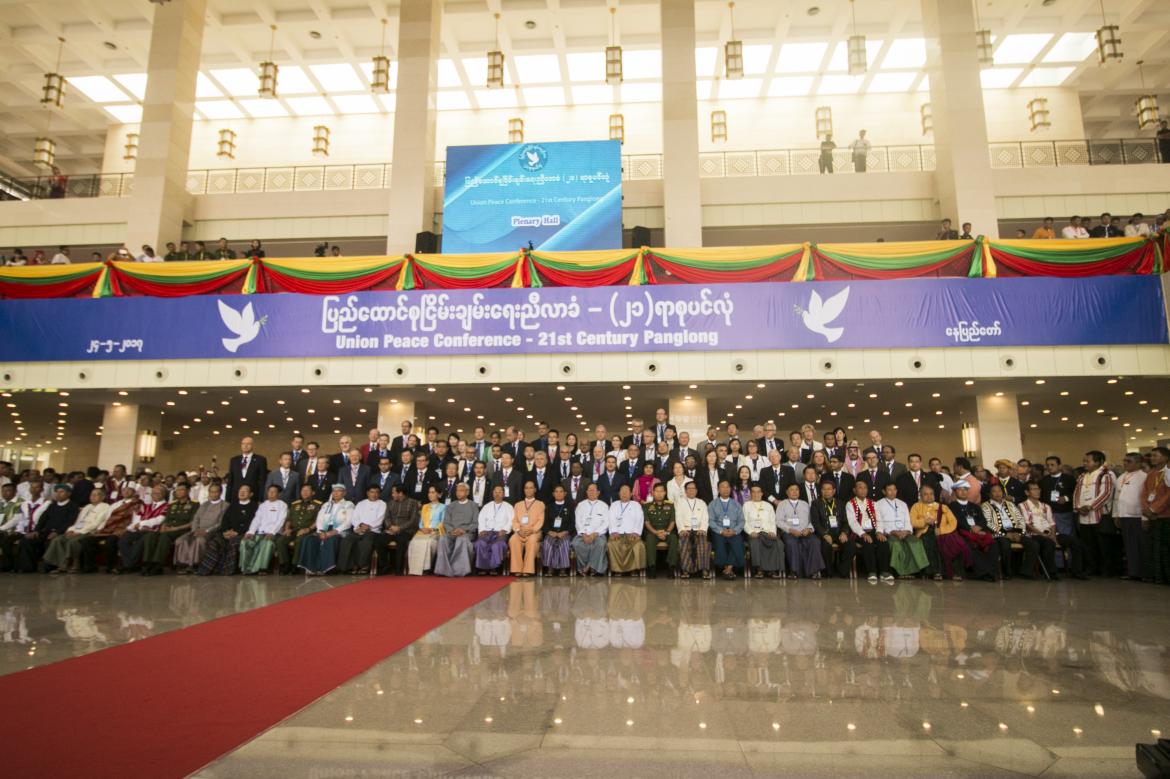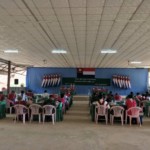By Sithu Aung Myint / Frontier Myanmar | June 25, 2017
The contentious issue of non-secession need not be an obstacle to a final agreement to emerge from the Union peace conferences.
ONE OF the most debated topics at the second 21st Century Panglong Union Peace Conference in Nay Pyi Taw last month concerned the issue of secession from the Union.
The principle that “no part or territory of the Union shall ever secede” – a basic principle of the 2008 Constitution – was among 45 principles listed for discussion that are to form part of a future peace agreement. The 37 principles agreed at the conference did not include the contentious issue of secession – or that of a federal army – and discussion was deferred to future peace conferences.
When discussion began on the secession issue, the Shan Nationalities League for Democracy was the first to object, saying it should not be included in the final agreement to emerge from the peace process. In the debate on the issue, some groups wanted terminology that made non-secession conditional on the provision of basic rights, while at the same time insisting that they had no desire to secede. Despite extensive discussion, no agreement could be reached and the decision was made to defer debate on the issue.
When a final Union Peace Accord is reached and leads to the expected drafting of a constitution for a Democratic Federal Union of Myanmar, should the principle of the right to secede be omitted? It’s what I’d like to discuss this week.
When the SNLD raised objections to inclusion in a future peace agreement of the principle that “no part or territory of the Union shall ever secede”, its position was based on reasonable, considered arguments. They included that a future democratic federal Union would only be stable and strong if it was based on mutual understanding, respect and trust, and not on fear, suspicion and anxiety.
It also argued that insistence on non-secession was contrary to the spirit and promise of the 1947 Panglong Agreement, a formula for federalism agreed by Bogyoke Aung San and Chin, Kachin and Shan leaders. Signed on February 12, 1947 – celebrated as Union Day – the agreement accepted in principle the “full autonomy in internal administration for the Frontier Areas”. The SNLD also contended that insistence on non-secession was contrary to the vision of Aung San, the architect of independence.
For an understanding of the stand taken by the SNLD, we need to consider the background to Burma achieving independence from the British on January 4, 1948.
Before the British completed their occupation of Burma in 1885 after fighting three wars, the modern state of Myanmar had typically comprised a diversity of separate kingdoms and princely states based along ethnic lines, including the Bamar, Shan, Mon, Rakhine, Kachin and Chin. In the pre-British era, when a king became strong he fought other kings and annexed their territory. Wars were constant and some Bamar kings became very powerful. In 1767, the army of the Konbaung dynasty monarch, King Hsinbyushin, captured and sacked Ayuthaya, capital of the neighbouring Kingdom of Siam.
The border of present-day Myanmar was largely determined after the British completed their conquest of Burma in 1885. The colonial rulers introduced separate administrative systems for what was known as Burma Proper and the border regions.
The Bamar and the other ethnic groups fought together against the British for independence. As independence neared, the historic meeting took place that produced the 1947 Panglong Agreement. It had two main elements. The ethnic nationalities agreed not to try to establish separate states but to combine with Burma Proper to achieve an independent Union. Once independence was achieved, there would be equality in the Union among all ethnic groups. This equality was provided for in a constitution for the future Union that was drafted in 1947 and took effect when independence was proclaimed on January 4, 1948. It has been the country’s only constitution based on agreement among Bamar leaders and those of other ethnic nationalities.
The constitution recognised Burma Proper, Shan, Kachin, Kayah and Kayin states, and a Chin Special Division. The 1947 constitution granted states the right to self-determination, and most importantly, in Chapter 10, also granted them the right to secede, but not until 10 years after the charter took effect. These provisions were included in the 1947 constitution to reflect the spirit of the Panglong Agreement.
After General Ne Win seized power in a coup d’etat in 1962 he abolished the 1947 constitution and concentrated power in a Bamar-dominated Revolutionary Council. The constitutions drafted under military dictators in 1974 and 2008 were as unacceptable to many Bamar as they were to other ethnic nationalities.
It cannot be denied that when ethnic nationalities resorted to armed struggle decades ago because of inequality, oppression and discrimination, they dreamed of establishing separate states. But attitudes have changed and there is no ethnic group that still talks of the impracticable idea of creating a separate state. Instead, they talk only of building a democratic federal Union. They will not secede from the Union because they uphold the spirit of Panglong.
At a time when the nation is striving for reconciliation and national unity, serious consideration must be given to whether it is necessary to include a non-secession clause in a future constitution.
Insisting on a non-secession clause would mean disregarding the content of the original Panglong Agreement and the 1947 Constitution, both of which were agreed upon by Bamar and ethnic minorities. Its inclusion should not be forced at future peace discussions.
This article originally appeared on Frontier Myanmar on June 25, 2017.






